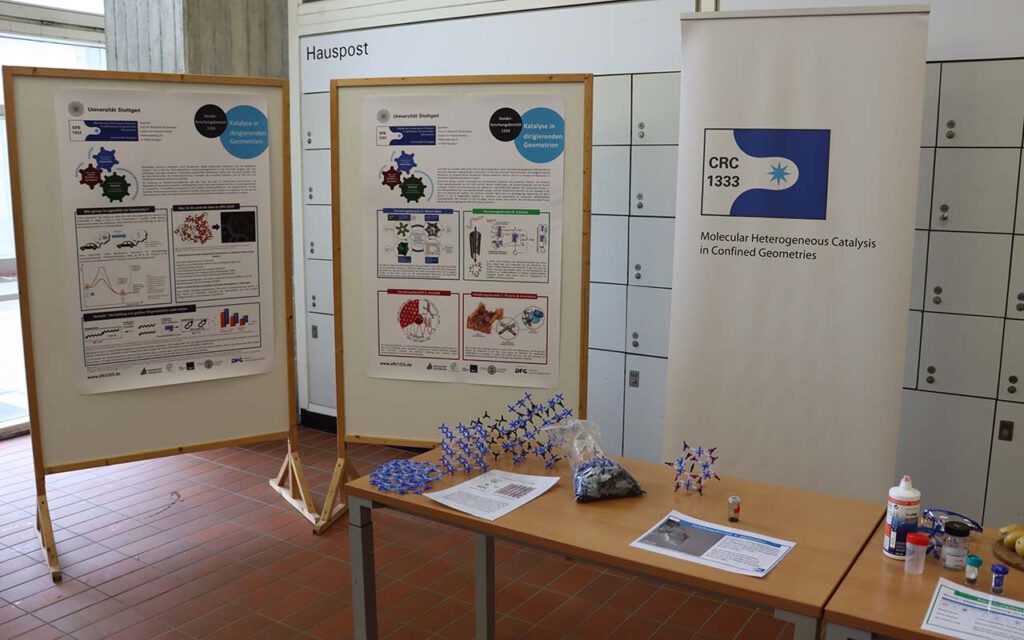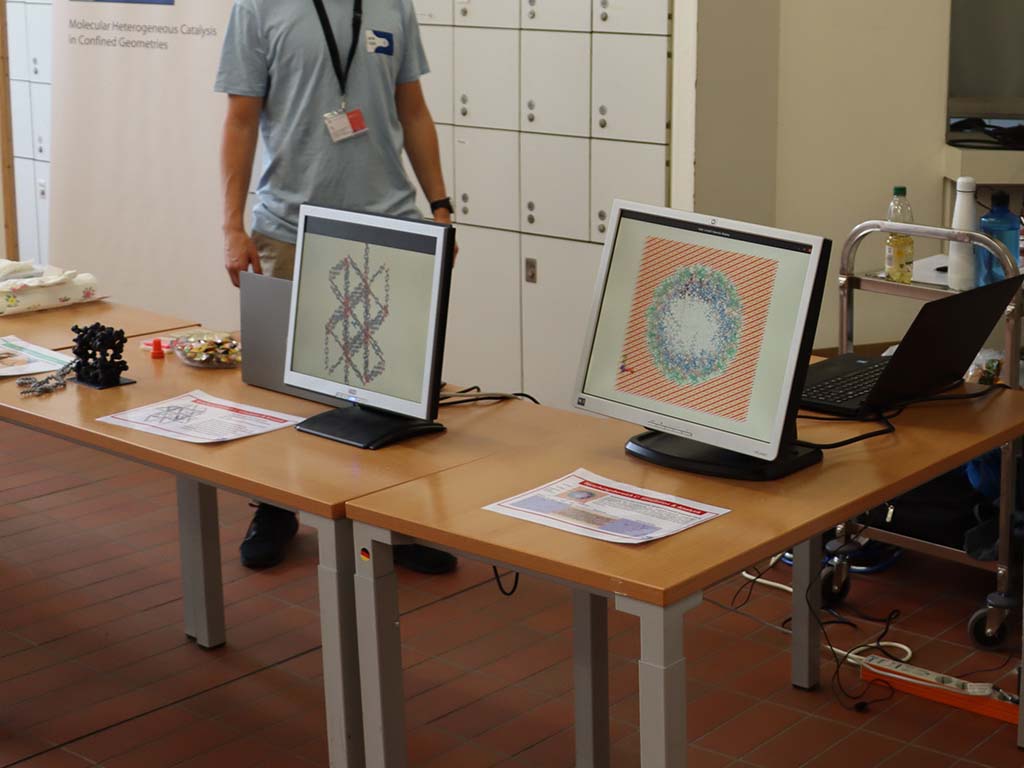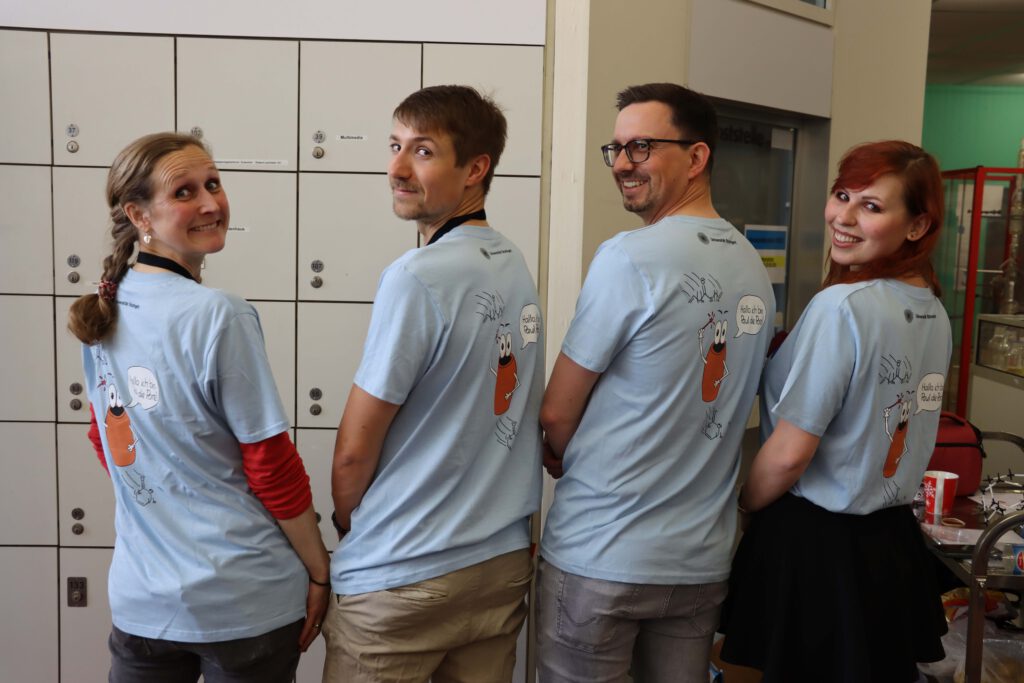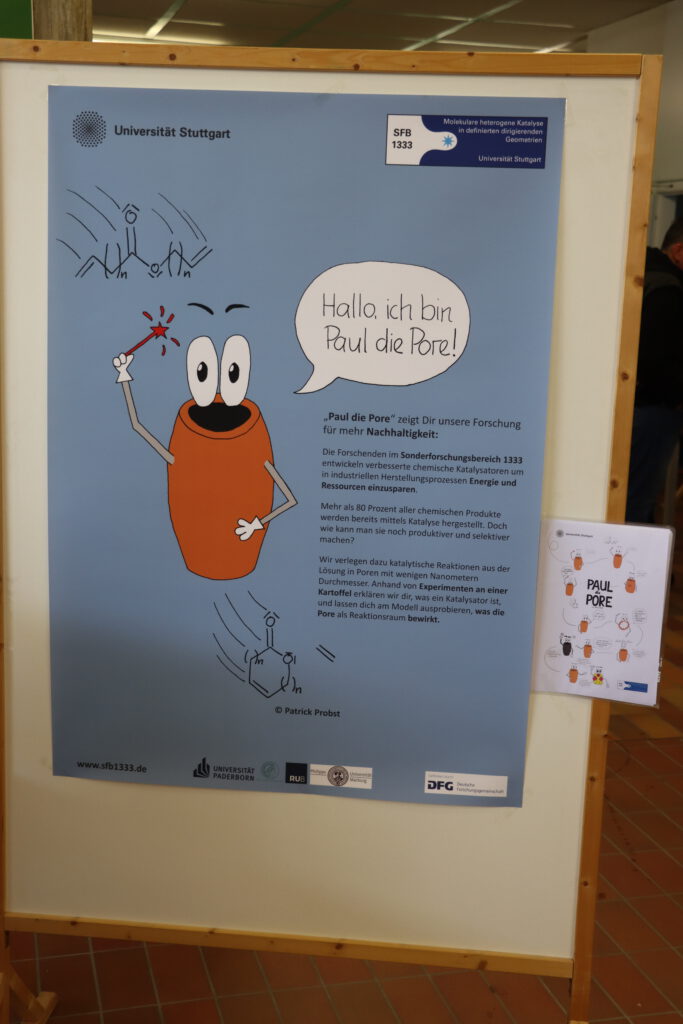On Saturday, May 13, 2023, Tag der Wissenschaft / Science Day 2023 took place. The University of Stuttgart opened its doors to many interested visitors at the Vaihingen campus to experience research up-close.
At our CRC1333 booth, CRC 1333 researchers explained the relevance of our research, its general idea and offered visitors several exciting opportunities to experience it hands-on.
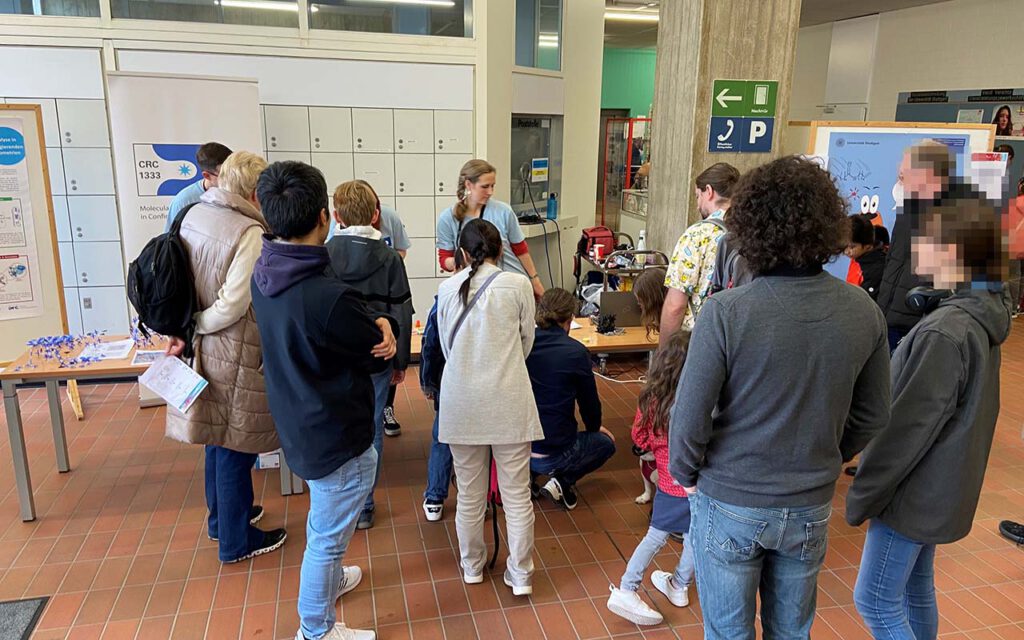
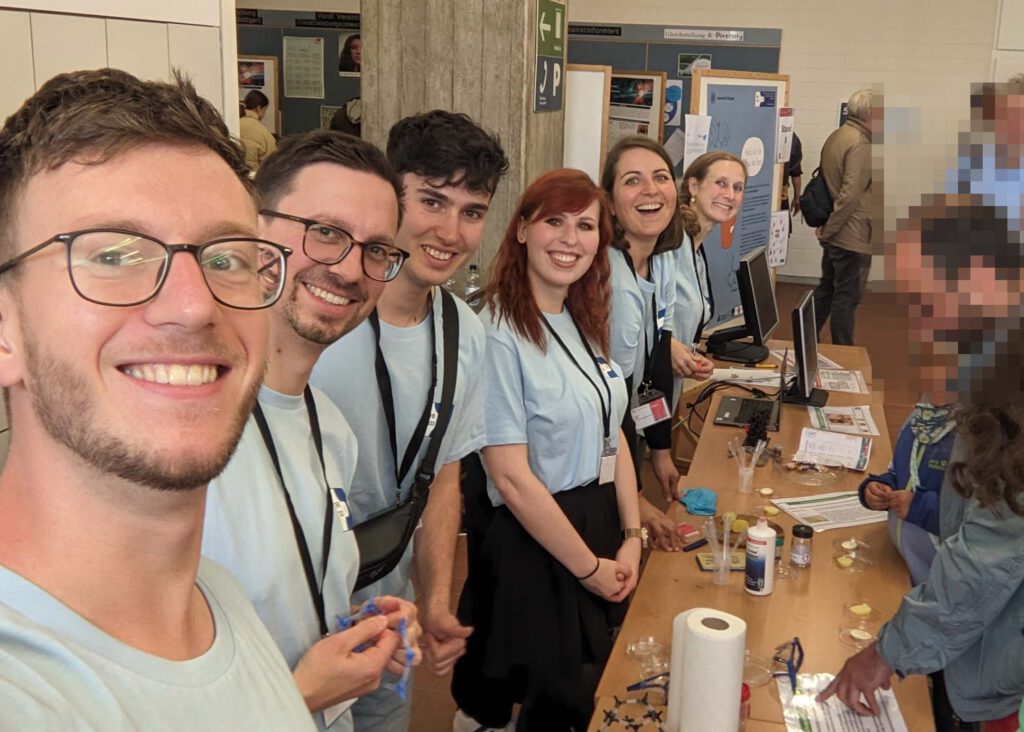
Children and adults could learn more about catalysis in nature by conducting an experiment with catalase and hydrogen peroxide on raw and boiled potatoes. The raw potatoes showed a bubbling reaction caused by catalase, an enzyme within the potato, while breaking hydrogen peroxide into oxygen and water. In the boiled potatoes the enzyme was destroyed and therefore no reaction took place.
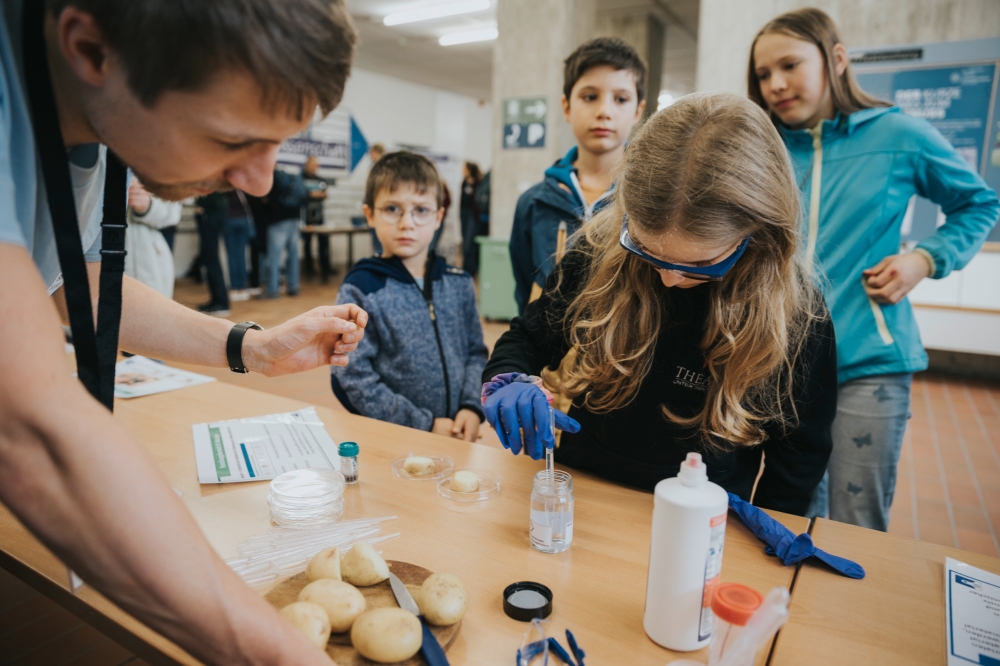
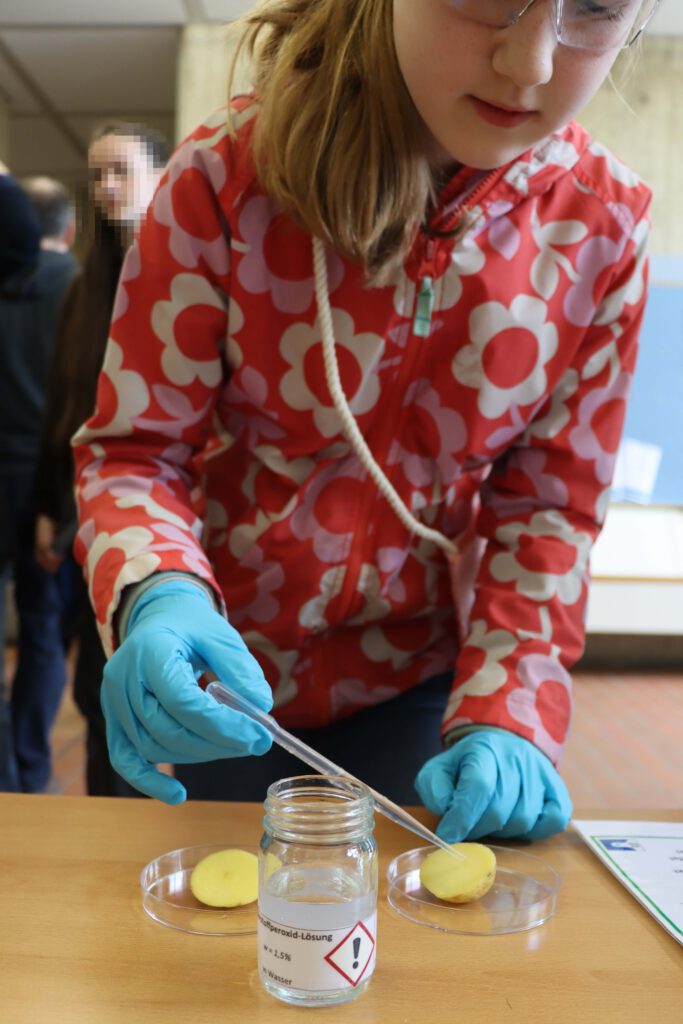
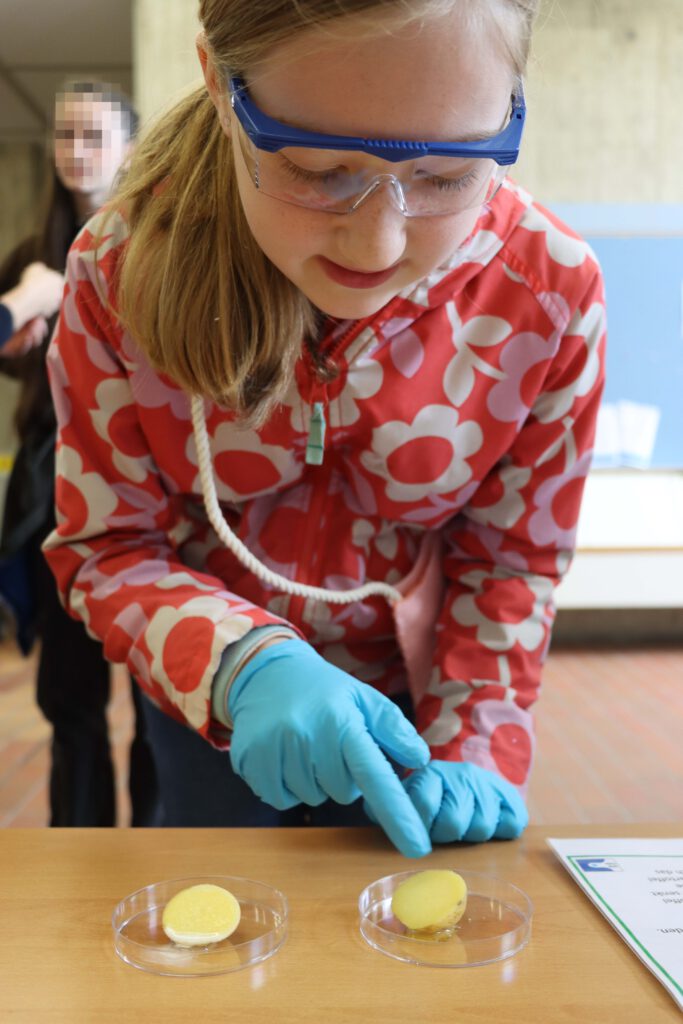
Children could also build their own metal–organic framework by using a building kit consisting of octahedral nodes and linear pieces of tubing. The goal was to form a three–dimensional structures to visualize how the pores are formed and how they are accessible from all sides. A very popular activity and many great structures were built.
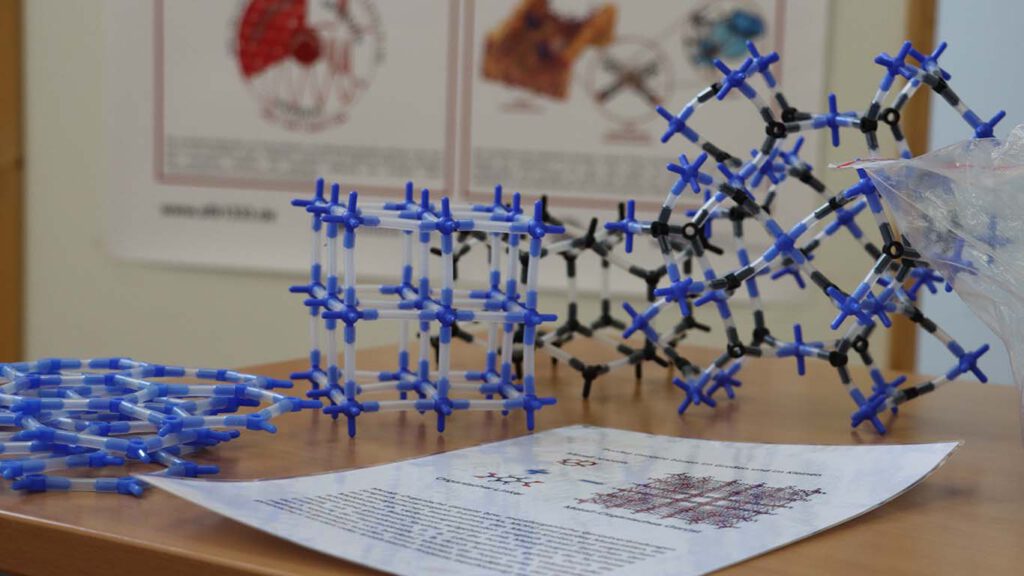
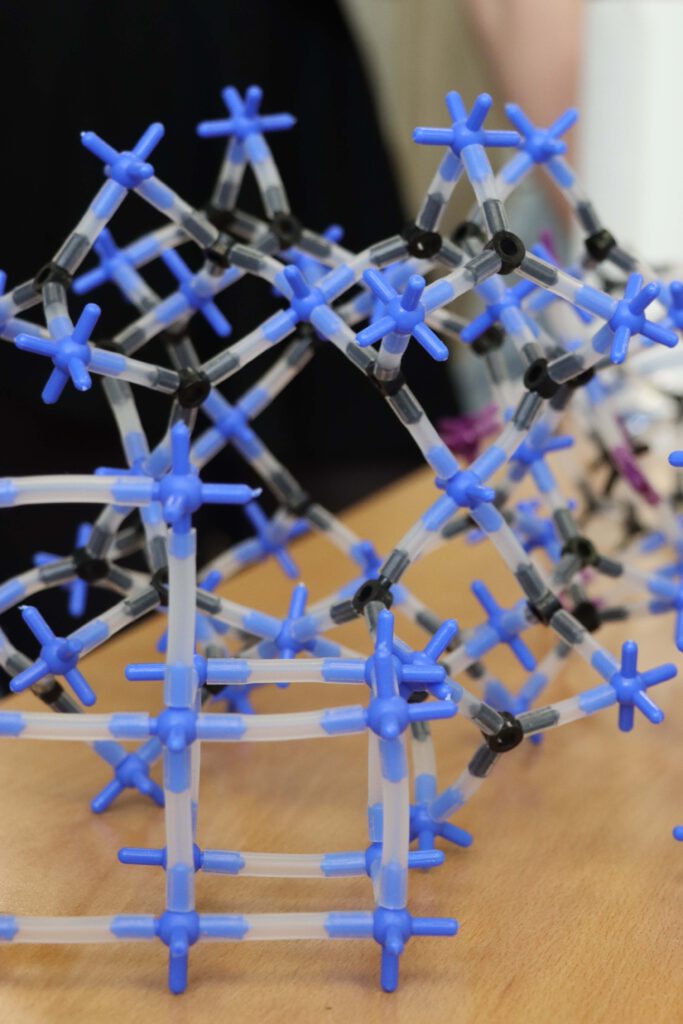
A 3-D model of a pore of highly ordered mesoporous silica (SiO2) was used to visualize the preferred product of the reaction at the catalyst inside the pore. Children could try out whether the mono macrocycle, the ring dimer, the ring trimer or the long chains of >3 starting molecules fit inside the pore.
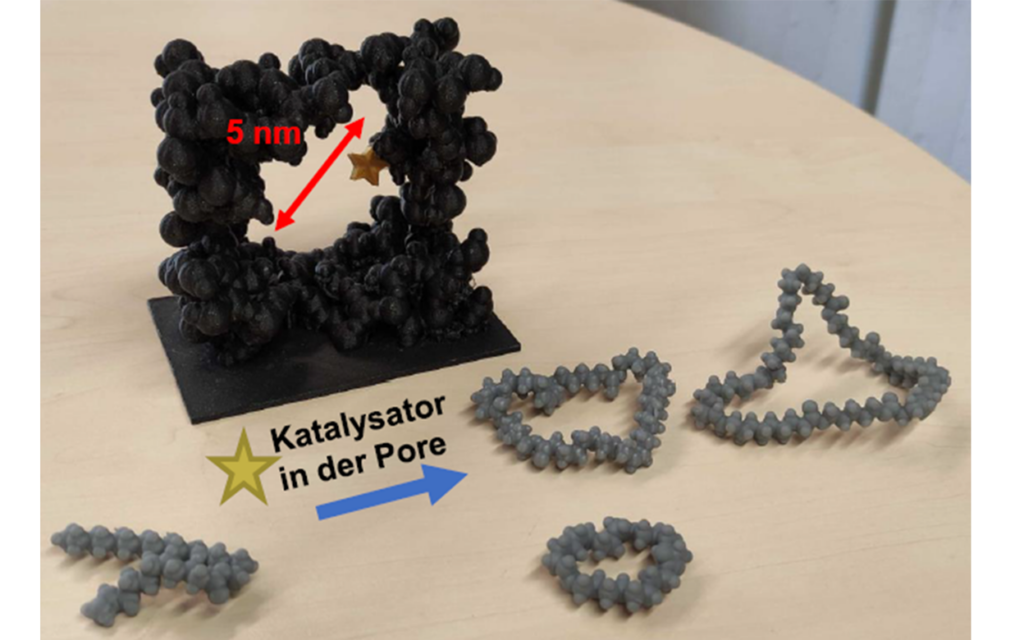
The CRC1333 booth also presented general information on our research on several posters, simulations of a metal-organic framework with a catalyst from different perspectives and catalysts in an ionic liquid based two-phase solution as well as a poster and comics from our mascot “Paul die Pore”.
We had a fun and successful Tag der Wissenschaft 2023!
